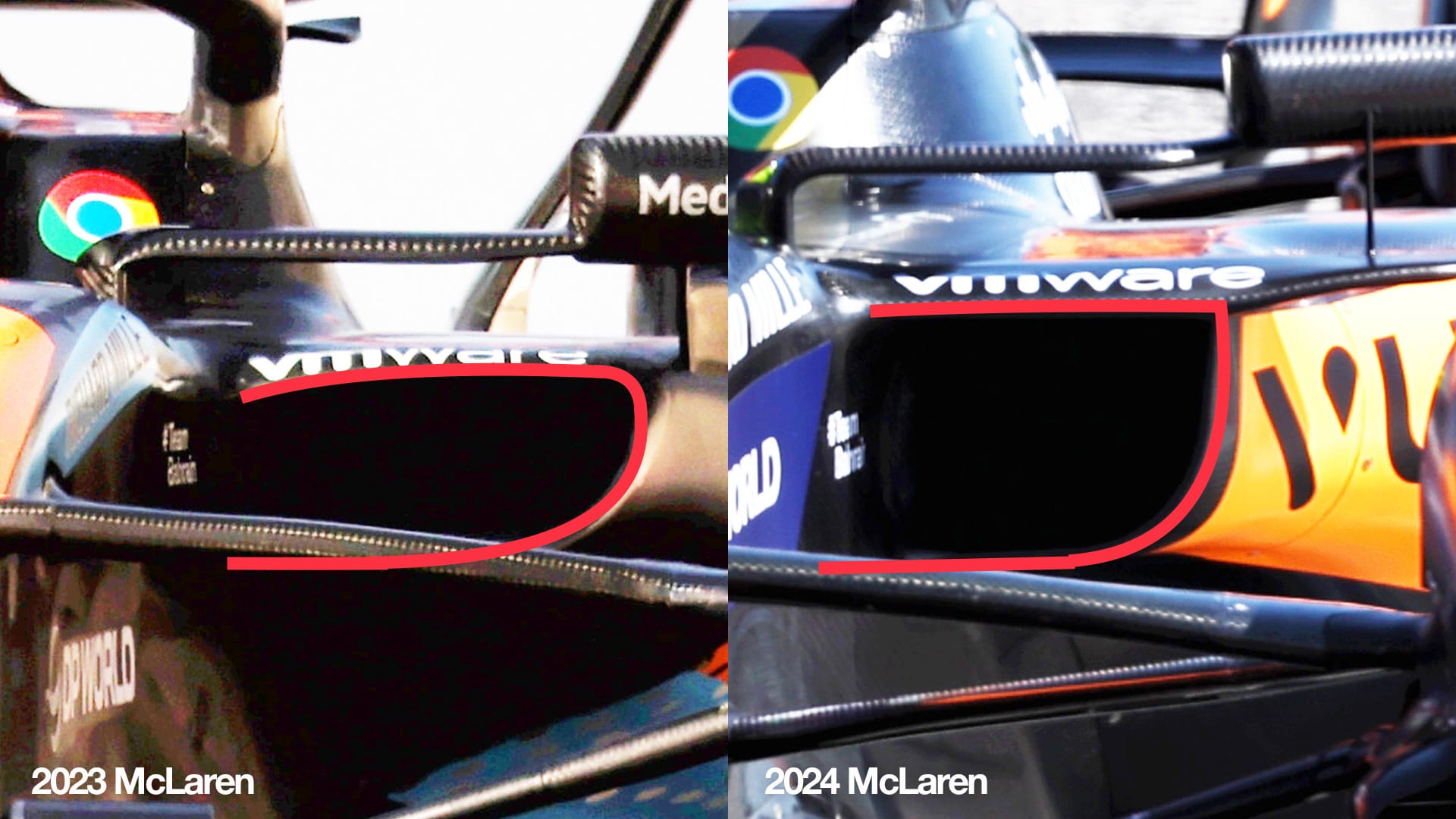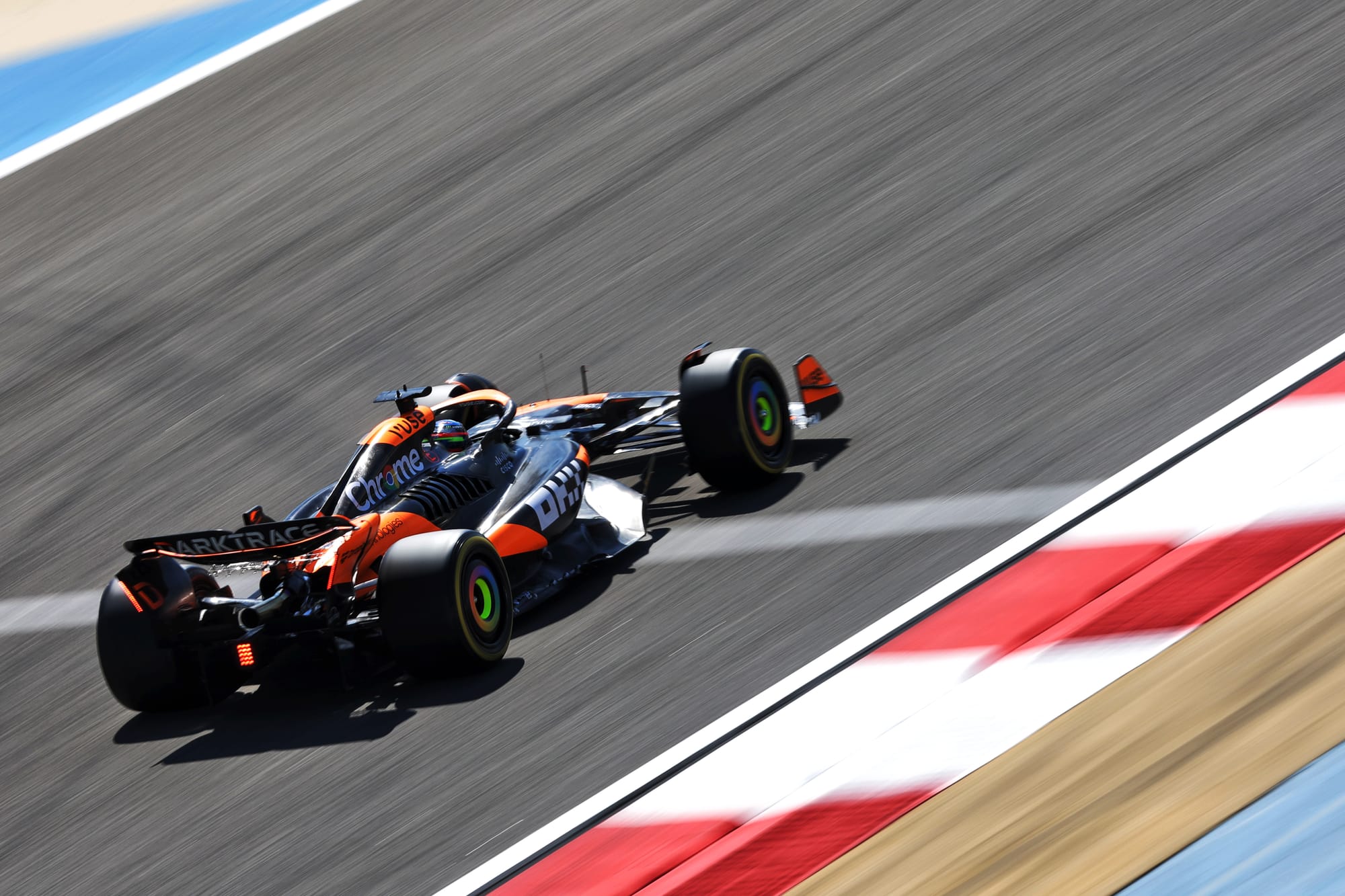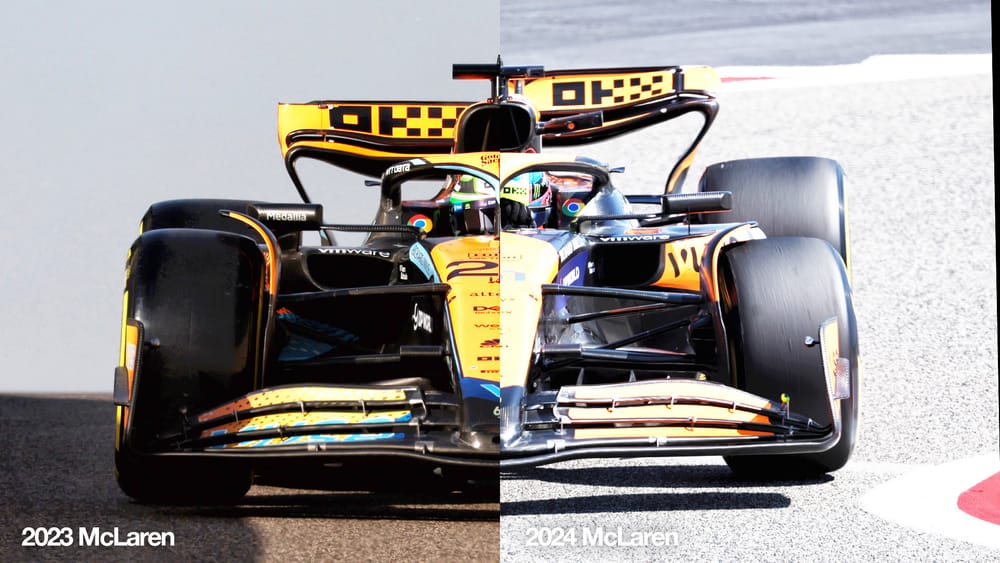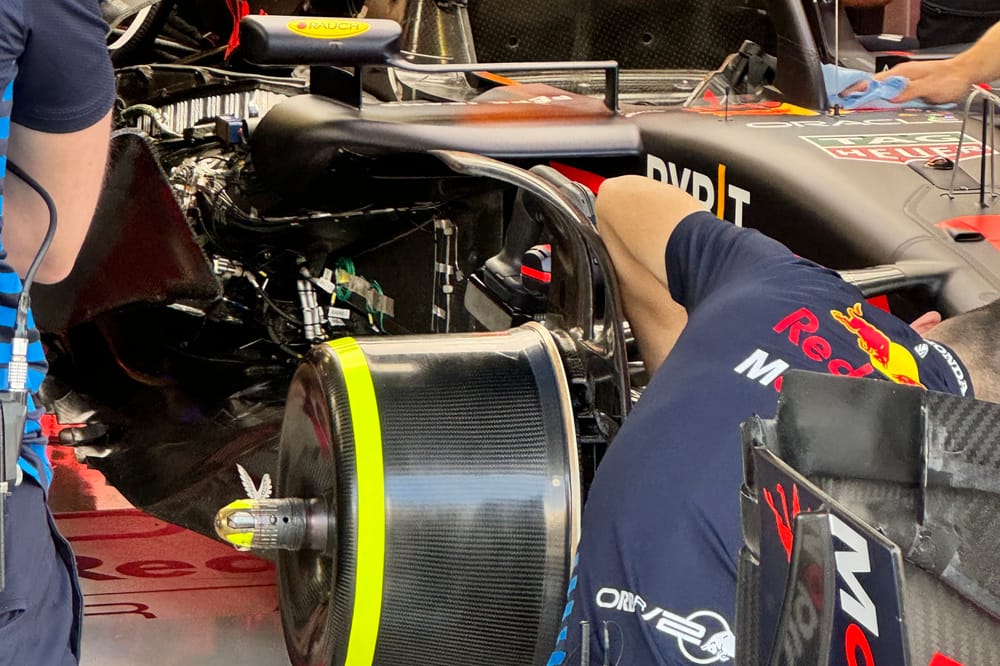Up Next

When McLaren first introduced its 2024 Formula 1 car we all wondered if it was real or a well-dressed-up render.
It was very careful with its image editing and angle choices to avoid giving away much about its floor edges, the area at the back of the front suspension heading towards the floor and the sidepod inlets in particular, and team members were even joking about the efforts to hide key details.
But now in Bahrain, there is no hiding place. The team’s MCL38 is up and running and we can compare it to last year's car and see what was previously obscured.
Here’s what I’ve noticed so far:
Front wing
Taking a look at the front wing and nose assembly shows very little difference.
As the front wing and nose is a bolt-on item it could be the same component as at launch, and an advancement on it could potentially be one of McLaren’s first developments.
It may have just wanted a little more time to finalise the next version and, if it is a little different, also not to show it to the others too early.
Radiator inlet
This radiator inlet comparison with the red highlight shows McLaren’s actually made it deeper but a little narrower versus last year’s car.
That is a bit of a strange thing to do as normally with time to optimise - and given the direction of Red Bull’s development last year - you would think McLaren would have gone in the other direction.
Any team that went to the extent of doing a revised sidepod radiator inlet went down the 2023 Red Bull route. Airflow used for cooling has lost all its energy so is a waste of time for producing downforce and the bigger the inlet the more airflow will go through it so this will leave less to produce downforce.
The angle of the shot is a little different as we can see from the rear wing height, but the height of the halo is very similar and that is in the same area as the radiator inlet. The top front wishbone is obviously in front of the inlet but I have put my red lines over it just to show the complete inlet opening.

The above closer shot shows the radiator inlet in more detail (red highlight).
This side shot shows the detail change away from last year's Red Bull ‘duck bill’ style inlet to a flatter design, again highlighted in red.
Front suspension
One of the main differences in this overhead shot is the increase in the inboard mounting width of the top front wishbone, which is highlighted in red. The blue double-ended arrow shows the area that I am talking about.
This will increase the stiffness of this component and as McLaren uses a pullrod front suspension, the top wishbone is the component that reacts to the load from it.
Floor edges
A closer look at the floor edges highlighted in the red oval shows that McLaren has to some extent reduced the effect these turning vanes have on scavenging the airflow out from under the front corner of the floor.
Sometimes you can simply out-trick yourself. Covering up some of the car's features during the release could now be construed as not being very happy with the step you have made over the winter.
Was it worth concealing the changes?

Altogether it’s a little confusing, and I’m not sure I am seeing much progress yet.
McLaren was very quick to say it had a well-defined development plan in place and it will be introduced in steps as the season progresses. But you can’t afford to throw away points while waiting on something new.
We will have another look at the end of this test. Perhaps parts are winging their way to Bahrain as we speak.





